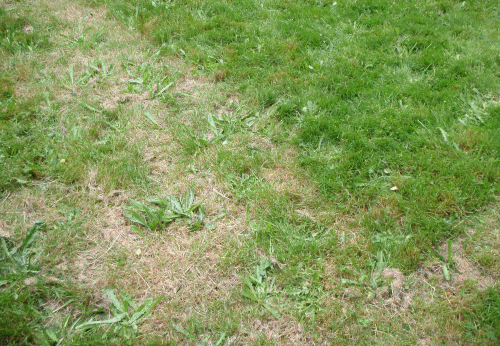








Anyone who has never made a mistake
has never tried anything new
-ALBERT EINSTEIN-




My books, movies, videos, podcasts, events ... the big collection of paul wheaton stuff!




Anyone who has never made a mistake
has never tried anything new
-ALBERT EINSTEIN-








My books, movies, videos, podcasts, events ... the big collection of paul wheaton stuff!





paul wheaton wrote:
I'm pretty sure that tall fescue would not do well in texas. You need a warm season grass. I'm gonna hafta step aside and let others help you since I am not familiar enough with the warm season grasses to make a good suggestion.









filipina wrote:
Is Ringer fertilizer the best to use? How about Milorganite or Nutri-Rich Natural Lawn Fertilizer? How do those compare? Thanks!




My books, movies, videos, podcasts, events ... the big collection of paul wheaton stuff!








My books, movies, videos, podcasts, events ... the big collection of paul wheaton stuff!













My books, movies, videos, podcasts, events ... the big collection of paul wheaton stuff!








My books, movies, videos, podcasts, events ... the big collection of paul wheaton stuff!
















My books, movies, videos, podcasts, events ... the big collection of paul wheaton stuff!




nateflower wrote:
I'm new to this and don't know if I'm "replying" to the right conversation. My question is about moss and how to get rid of it... can I say "kill"? It seems to be killing the grass throughout my backyard. New to the scene, just bought the house and trying to be good about chem. Any ideas?
My books, movies, videos, podcasts, events ... the big collection of paul wheaton stuff!




Connecticut Accredited Nurseryperson
Accredited Organic Land Care Professional (NOFA)





My books, movies, videos, podcasts, events ... the big collection of paul wheaton stuff!





Connecticut Accredited Nurseryperson
Accredited Organic Land Care Professional (NOFA)









Connecticut Accredited Nurseryperson
Accredited Organic Land Care Professional (NOFA)









Connecticut Accredited Nurseryperson
Accredited Organic Land Care Professional (NOFA)








Connecticut Accredited Nurseryperson
Accredited Organic Land Care Professional (NOFA)




















Dianne Keast wrote:
We are about to hit a hot dry spell, any new advice for lawn care in hot weather?





Puffin wrote:
Your article talks about how having great deep soil will allow the lawn to better endure hot and dry weather summer can bring, by watering deeply and infrequently. However it also mentions that deep watering should only be used in conjunction with deep soil. Any tips for folks who don't have good soil or are in the process of improving the soil.





lokewolf wrote:
I put down some scotts turf builder (32-0-4) approximately 3 weeks ago on my lawn and I'm wondering how long I should wait before I can safely start switching over to organic fertilizer? I'm planning on using a hose sprayer to apply some Mega-Green organic for the first application and then in late summer/early fall apply some of Blue Seals "Safe N Simple Lawn food".




tomiusa wrote: i would like some advice how to get rid of weed like this.
"the qualities of these bacteria, like the heat of the sun, electricity, or the qualities of metals, are part of the storehouse of knowledge of all men. They are manifestations of the laws of nature, free to all men and reserved exclusively to none." SCOTUS, Funk Bros. Seed Co. v. Kale Inoculant Co.

|
Every noble work is at first impossible. - Thomas Carlyle / tiny ad
2024 Permaculture Adventure Bundle
https://permies.com/w/bundle
|






